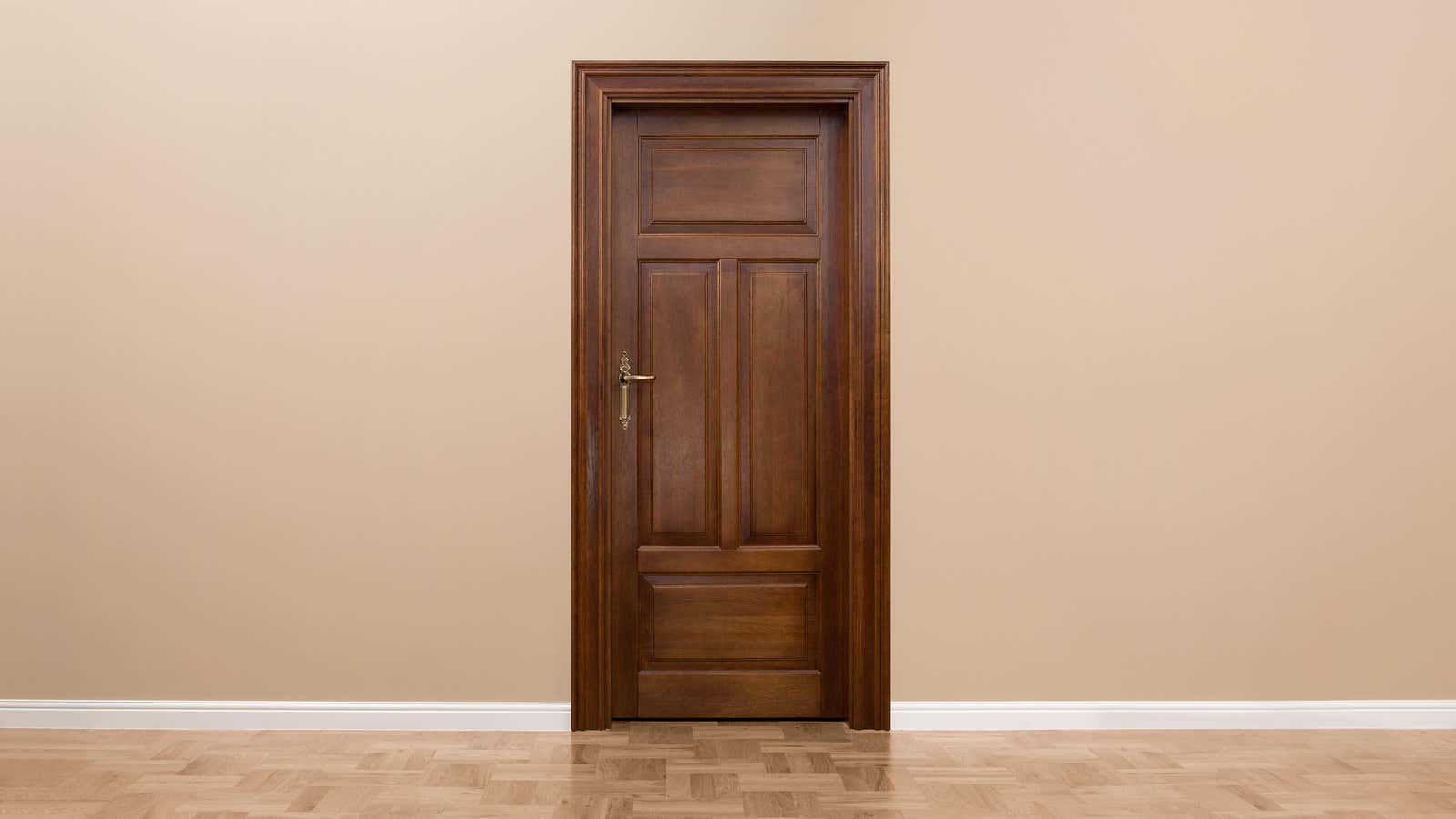How to Fix a Wooden Door That Sticks

As the seasons change, fluctuations in humidity and temperature can cause the wood to swell or shrink, making wood doors prone to sticking. Other factors that can cause doors to stick are things like loose hinges, stripped screws, or a worn seal. While there is no one-size-fits-all solution to this problem, there are a few things you can try to get rid of stubborn doors.
Mind the gap
The first thing to check when you find it difficult to close or open a door is that it is perpendicular to the door frame. You can determine this by attaching one side of the square to the door frame and the other side first to the top and then to the bottom of the door. If the door is not properly aligned with the frame, this is most likely your problem. Check your door to make sure the space between the door and the frame is the same. You should have ⅛” to 1/16” all the way around between the door and the frame. If these distances do not match, this may be a sign of loose fastening or other types of sagging.
Tighten the loops
If your door is not perpendicular to the frame, start by checking the hinges. Sometimes door hinges can loosen over time, allowing the door to sag from the frame. Check the hardware to make sure it is snug against the frame and use a screwdriver to tighten any loose screws on the hinges. Once everything is tidy, if the door is still giving you problems, there are a few more things you can try.
Fasten the stripped screws
If any of the screws turn in the hole without tightening, they are stripped. Remove the screws from the hinge and expose the wood surface they are attached to. Use wood chips and some wood glue to fill the hole and let it dry completely, then re-drill the pilot hole with a battery powered drill or cord in the same place, then reattach the hinge and screw. This should give the threads enough strength to tighten.
Use a spacer
Another reason a door cannot be perpendicular to the frame is because houses tend to sag over time, allowing the doors to sag a bit. Although this is not usually a structural problem, it can cause annoying scratching and sticking of doors. To solve this problem, you can try using a spacer behind the bottom hinge to straighten the door into the frame. All it takes is to remove the screws that secure the bottom hinge to the door frame, place a spacer behind where the hinge attaches to the frame, and reattach the hinge to the door frame. You can use a plumb or level to check if the door is standing straight up and down, but the real test is opening and closing the door to see how it works.
Change loops
If you live in an older building and your door is sticking even though everything seems to fit snugly, you might want to try swapping the top and bottom hinges. Over time, the top hinge of the door, which bears most of the weight of the door, can flex slightly, allowing the top of the door to come off the frame. Replacing the upper hinge with a lower one can help solve this problem and make it easier for the door to stick or scratch.
Cut to fit
If none of these fixes work, or if the space inside the door frame doesn’t allow for spacers, it’s time to try some light carpentry. Open and close the door a few times, looking for where the door is sticking or rubbing against the frame. Use a pencil to mark where the sticky part is and then remove the door from its hinges and place it on the workbench. Using a hand planer , you can carefully cut the part to be installed and rehang the door. Another option is to use a door trimmer , which can be handy if you don’t want to remove the door or don’t have a handy workbench.
Protect exposed wood
After pruning is complete, it is important to paint or seal the exposed areas of the tree. This will help control the amount of moisture your door will absorb or release, reduce the amount of swelling and shrinkage of your door when the weather changes, and can help your repair last longer.